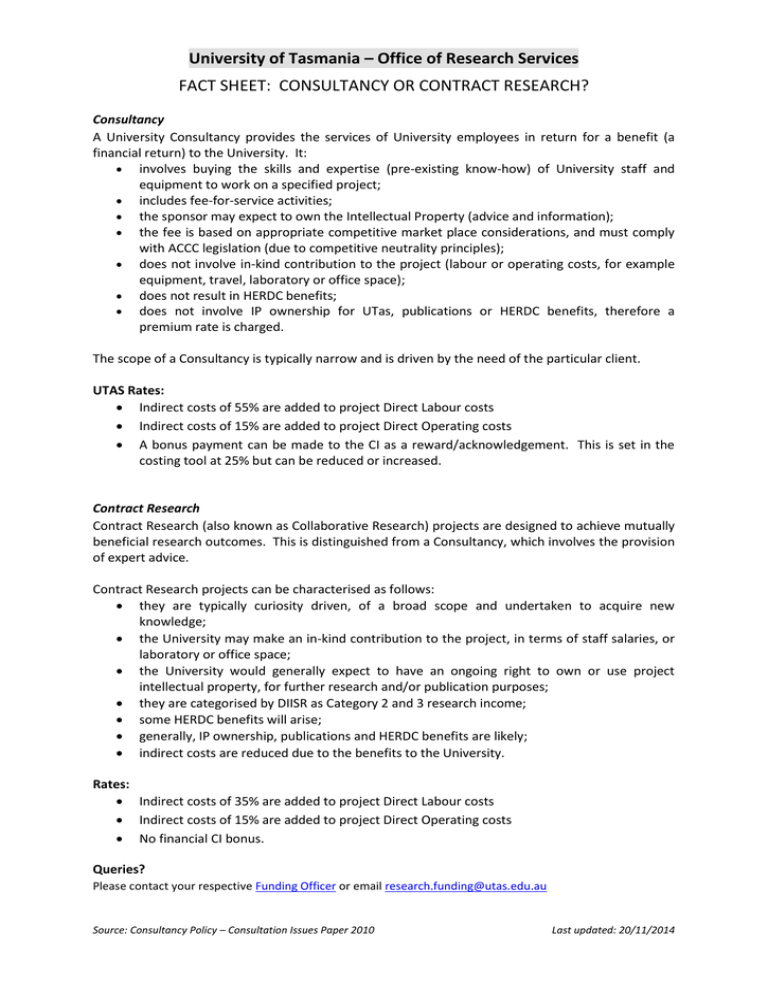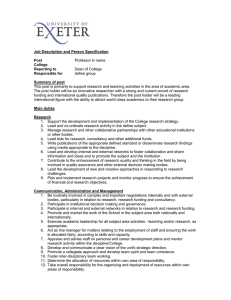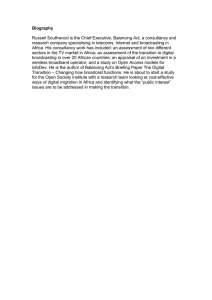Consultancy or Contract Research fact sheet (34.5 KB)
advertisement

University of Tasmania – Office of Research Services FACT SHEET: CONSULTANCY OR CONTRACT RESEARCH? Consultancy A University Consultancy provides the services of University employees in return for a benefit (a financial return) to the University. It: involves buying the skills and expertise (pre-existing know-how) of University staff and equipment to work on a specified project; includes fee-for-service activities; the sponsor may expect to own the Intellectual Property (advice and information); the fee is based on appropriate competitive market place considerations, and must comply with ACCC legislation (due to competitive neutrality principles); does not involve in-kind contribution to the project (labour or operating costs, for example equipment, travel, laboratory or office space); does not result in HERDC benefits; does not involve IP ownership for UTas, publications or HERDC benefits, therefore a premium rate is charged. The scope of a Consultancy is typically narrow and is driven by the need of the particular client. UTAS Rates: Indirect costs of 55% are added to project Direct Labour costs Indirect costs of 15% are added to project Direct Operating costs A bonus payment can be made to the CI as a reward/acknowledgement. This is set in the costing tool at 25% but can be reduced or increased. Contract Research Contract Research (also known as Collaborative Research) projects are designed to achieve mutually beneficial research outcomes. This is distinguished from a Consultancy, which involves the provision of expert advice. Contract Research projects can be characterised as follows: they are typically curiosity driven, of a broad scope and undertaken to acquire new knowledge; the University may make an in-kind contribution to the project, in terms of staff salaries, or laboratory or office space; the University would generally expect to have an ongoing right to own or use project intellectual property, for further research and/or publication purposes; they are categorised by DIISR as Category 2 and 3 research income; some HERDC benefits will arise; generally, IP ownership, publications and HERDC benefits are likely; indirect costs are reduced due to the benefits to the University. Rates: Indirect costs of 35% are added to project Direct Labour costs Indirect costs of 15% are added to project Direct Operating costs No financial CI bonus. Queries? Please contact your respective Funding Officer or email research.funding@utas.edu.au Source: Consultancy Policy – Consultation Issues Paper 2010 Last updated: 20/11/2014




